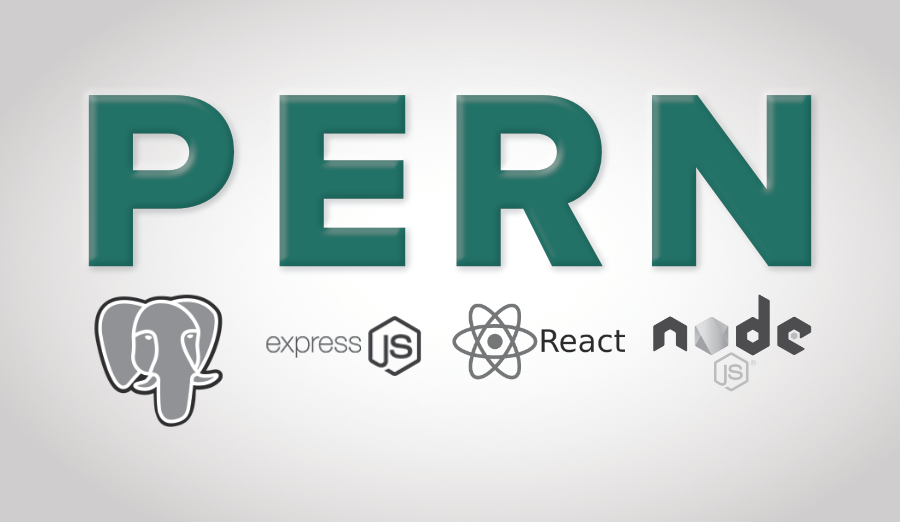What is PERN Stack?
Last Updated :
25 Sep, 2020
This stack consists of PostgreSQL, Express, React and Node.js. Combining these technologies, one can build a full-stack web application with CRUD operations. Everyone must have heard about MERN Stack which is basically a JavaScript Stack for the deployment of full-stack web development and contains 4 technologies, namely: MongoDB, Express, React and Node.js. but PostgreSQL seems to be gaining more popularity because it offers wide support for NoSQL feature, transactional and standard compliant. It is written in C language.

Knowing about PERN Stack Components:
- PostgreSQL (Object-Relational Database)
PostgreSQL is a powerful, open source object-relational database management system (ORDBMS) with an emphasis on extensibility and standards compliance that uses and extends the SQL language combined with many features that safely store and scale the most complicated data workloads. PostgreSQL is ACID-compliant, transactional, that stores the data in the tabular format and uses constraints, triggers, roles, stored procedures and views as the core components.
Why use PostgreSQL?
- Free and open source.
- Available in multiple languages.
- Highly extensible.
- Protects data integrity.
- Builds fault-tolerant environments.
- Robust access-control system
- Supports international characters.
- Apple uses PostgreSQL!
- Creating students table
CREATE TABLE students (id INT, name VARCHAR (100));
- Inserting a record into students table
INSERT INTO students VALUES (1, 'Geeks');
- Reading records from the students table
SELECT * FROM students;


- Updating records in students table
UPDATE students SET name="GeeksforGeeks" WHERE id = 1;

- Deleting records from students table
DELETE FROM students WHERE id = 1;
- Express (Back-End Framework)
It is a web application framework for Node.js. Being a free and open software, it is used for building web applications and specially APIs. Express provides a thin layer of fundamental web application features, without obscuring Node.js features that you already know.
Why use Express?
- Provides a robust set of features for both web and mobile applications
- Makes back-end code easier and simpler to write.
- Supports many middleware.
- Minimal and Flexible web application framework.
- Creating efficient and robust API is quick and easy.
- Allows you to define an error handling middleware.
- React (Front-End Library)
React is basically a JavaScript library for building user interfaces. It is easy, efficient and painless way to create Interactive UIs. It is maintained by Facebook and a community of individual developers and companies. Design simple views for each state in your application, and React will efficiently update and render just the right components when your data changes and for this reason only, it is used for developing single-page application or mobile applications.
Why use React?
- Virtual DOM in ReactJS makes user experience better and developer’s work faster
- It guarantees stable code.
- React allows its components to be reused saving time and effort.
- Provides high performance.
- Provide the feature of Virtual DOM.
- SEO friendly!
- Node.js (JavaScript runtime environment)
Node.js is a JavaScript runtime built on Chrome’s V8 JavaScript engine for developing server-side and networking applications. Being an asynchronous event-driven JavaScript runtime, it is used to build fast and scalable network applications. Node.js is free and open source server environment that runs on many platforms.
Why Node.js?
- Provides event-driven and asynchronous features which makes it lightweight and efficient.
- No buffering and thus, is very fast.
- Highly Scalable.
- Highly extensible.
- Provides advantage of caching.
- Handles thousands of concurrent connections with a single server.
- Provides vast number of libraries.
Like Article
Suggest improvement
Share your thoughts in the comments
Please Login to comment...